Rob’s been in touch with a missive on his track crossover problem:
“My Far Moor Junction has seen a lot of traffic over the years.
In fact, the double-slip switch that makes it all happen has had a lot of hard use. It needs to be replaced.
Sometimes a locomotive will come through that is not quite all on the rail and hit it pretty hard. When that happens things can get bent. That is what has happened.
While I have things torn up, I decided to move my freight to down main crossover away from one of the super-elevated 180-degree curves. These are on all the express passenger lines on the 180-degree curves. The one that feeds into the crossover is too close. The rail traffic coming off the super-elevated rail needs time to settle before going through the point. Moving the crossover should accomplish this or I hope so.
I use this crossover when there is a train parked on the down main line between Howe Street Station and Far Moor Junction.
Passenger trains can still run at a reduced speed of course, but there is no disruption of service.
Anyway, it was time to renew this area and improve it incrementally. That is what the video is about, the physical track changes needed in this area.
Here is a final picture with everything put back together and ballasted.
After putting the track back together, I ran a number of locos and trains across the double slip. I noticed that my most troublesome locos were still having some difficulty traversing this new one.
I decided to take a deeper look.
I got my little level out and went over the double slip switch with it and discovered it was out of level by as much as half a bubble or more in some areas.
To fix this, I got some thick 1 mm card and cut it into 6 mm wide strips and cut those into small squares. I then inserted these under the sleepers on the low side until the double slip switch was as level as possible.
When I was done I leveled it until the bubble was between the lines. After doing this, I sent a number of locomotives and trains over it again. This time, everything ran smoothly. It is amazing what a difference it made.
I think that is why some equipment ran so rough over it these last few years. I should have checked it a long time ago but didn’t.
The funny thing is, when I installed the new cross-over, I did level it as a matter of course. Why I didn’t do it on the double slip is anybody’s guess. I think since it is such a rigid unit, it never occurred to me that it might twist a little or not just lay there level. The problem is no doubt the track coming into it and leaving it. That is level too now by the way since I didn’t stop at the double slip switch, I leveled all the way to the beginning of the superelevation in both adjacent curves.
It pays to check for level on your track and turnouts/points when you are laying your track and now and then if you are having trouble thereafter.
Rob”
“Hi Al,
Just completed a small N-Scale project over the holidays. 2X4 platform, a simple oval, paper houses, foam mountains. It’s my first N-Scale so nothing fancy just getting my feet wet on this one.
Best,
Mike”
A big thanks to Rob for sharing his thought on his track crossover – and to Mike too (who has made great use of the printable buildings).
That’s all for today folks.
Please do keep ’em coming.
And if today is the day you stop dreaming and start doing, the Beginner’s Guide is here.
Best
Al
PS More HO scale train layouts here if that’s your thing.
Need buildings for your layout? Have a look at the Silly Discount bundle.
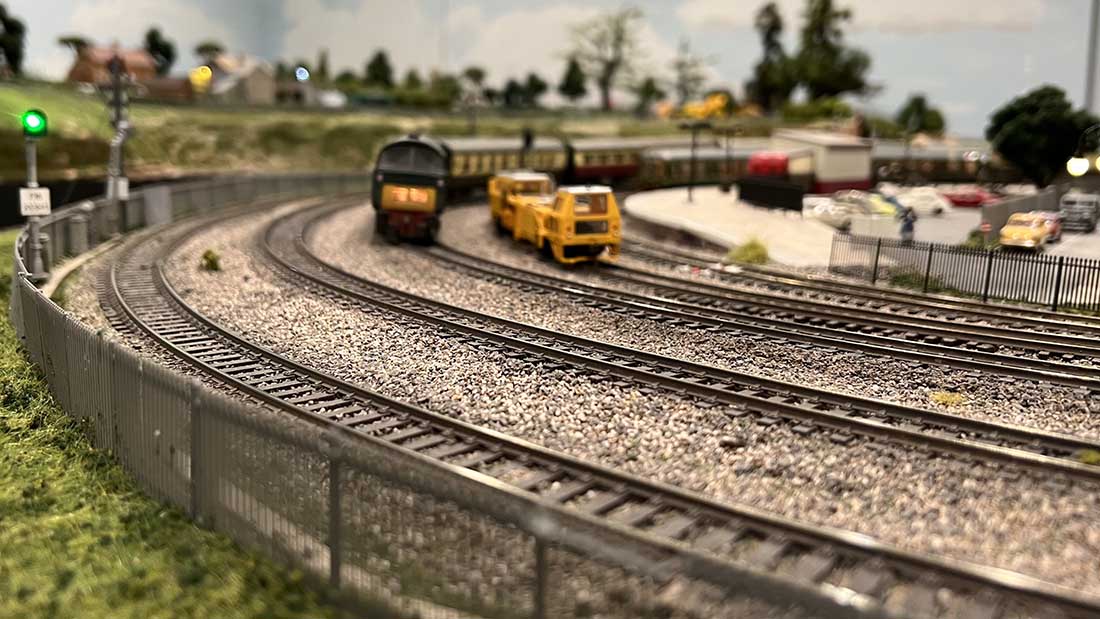
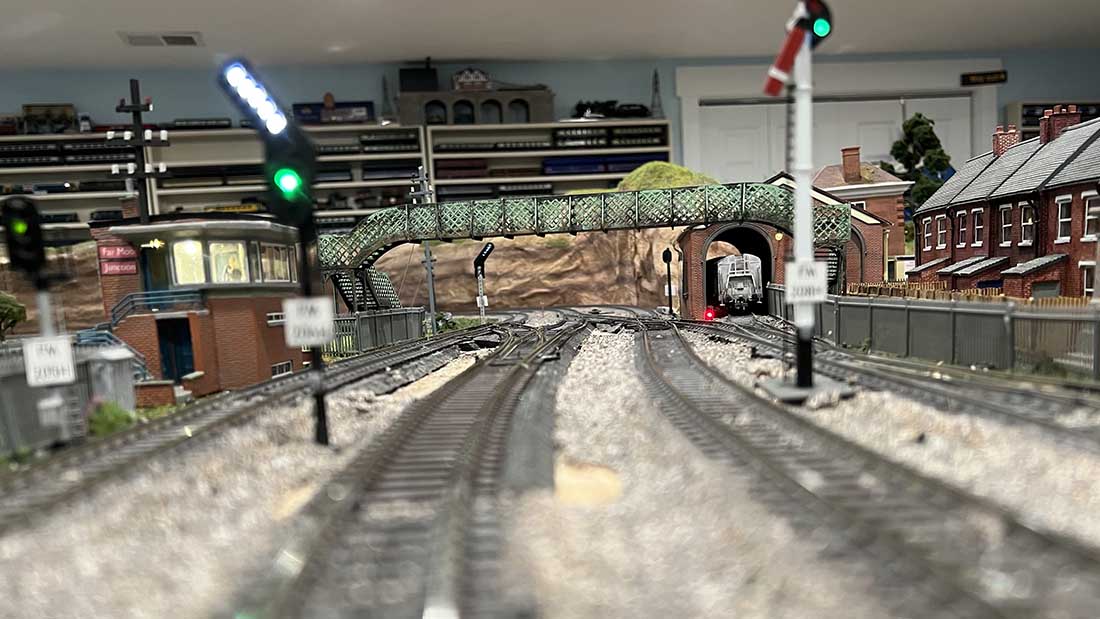
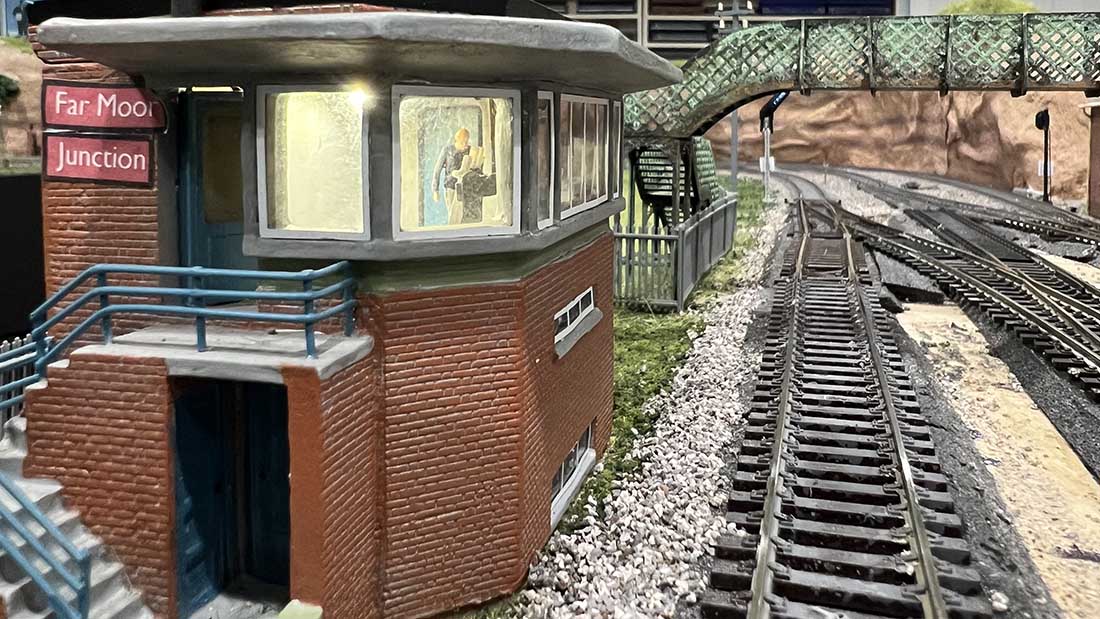
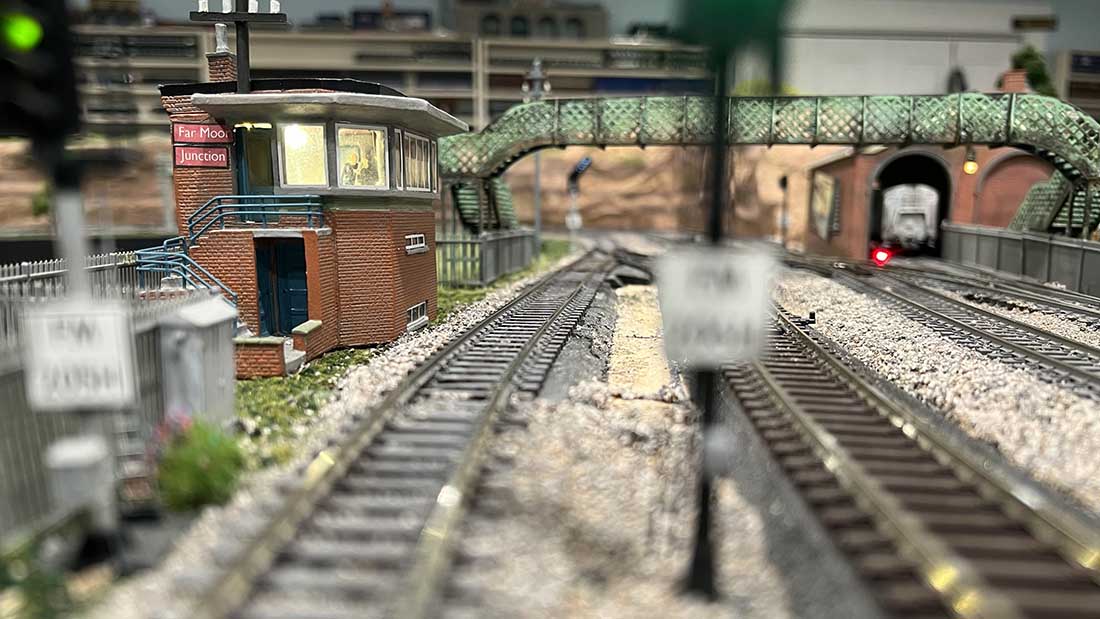
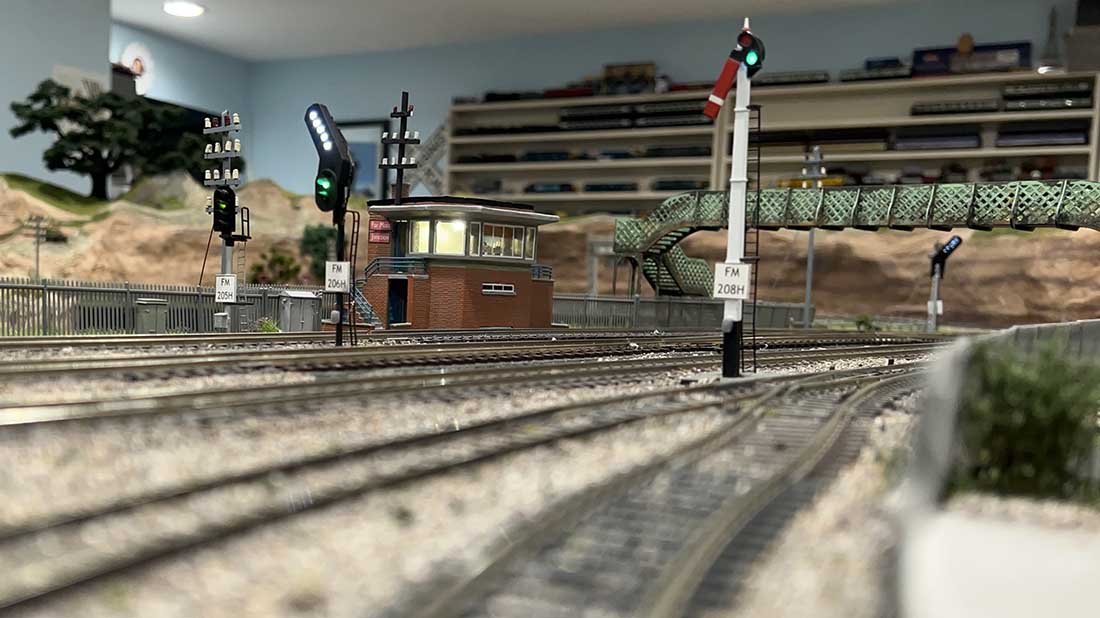

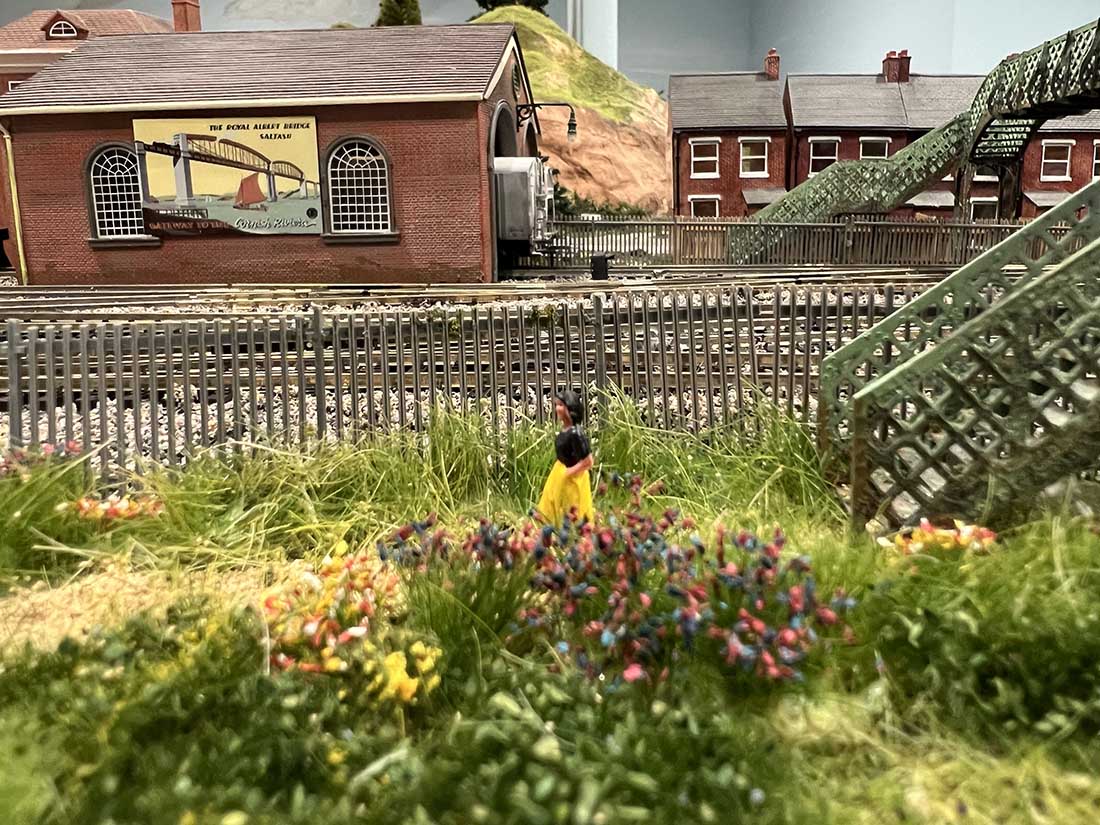

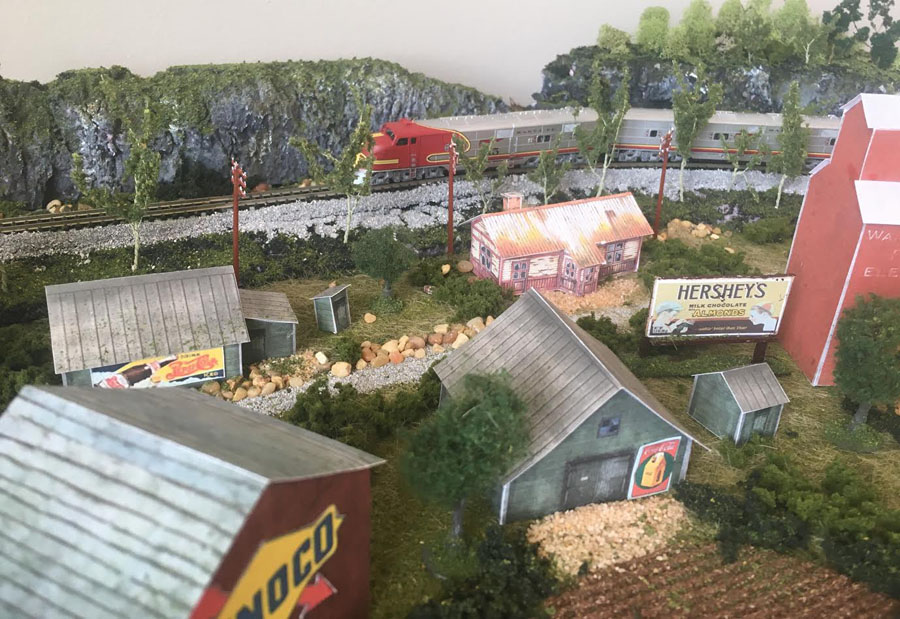
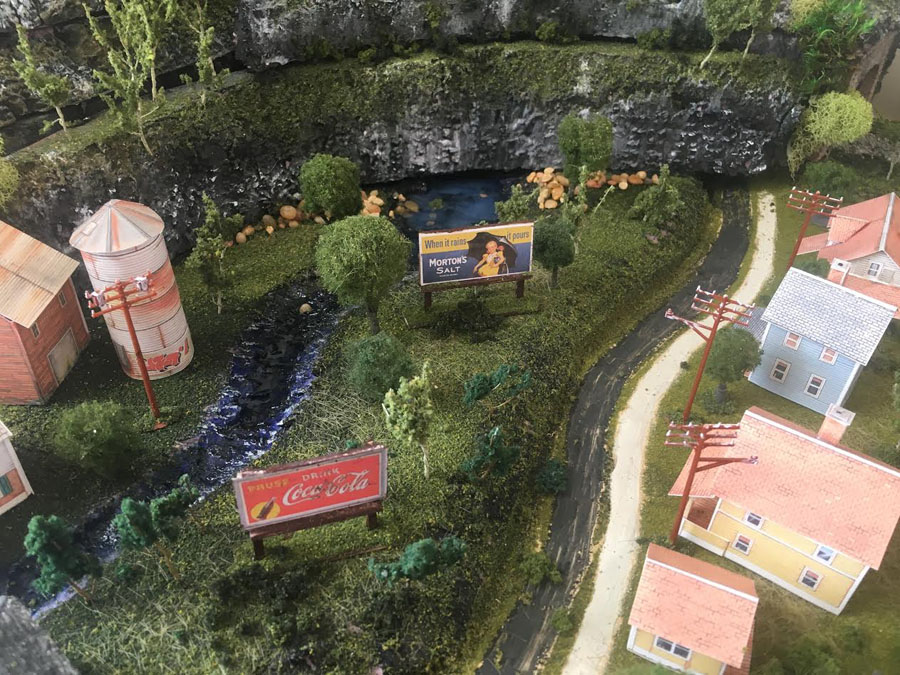
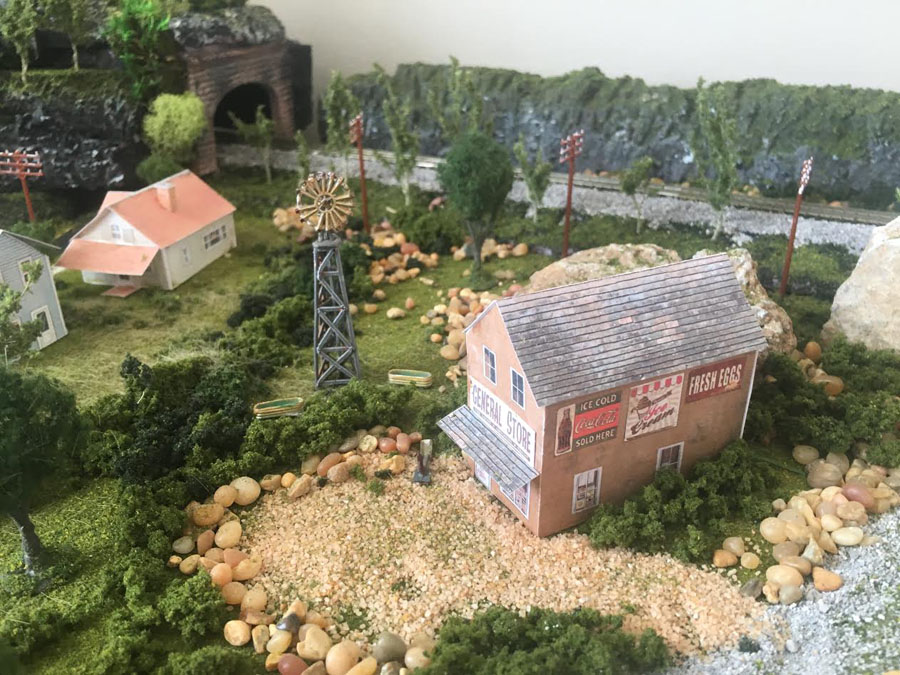
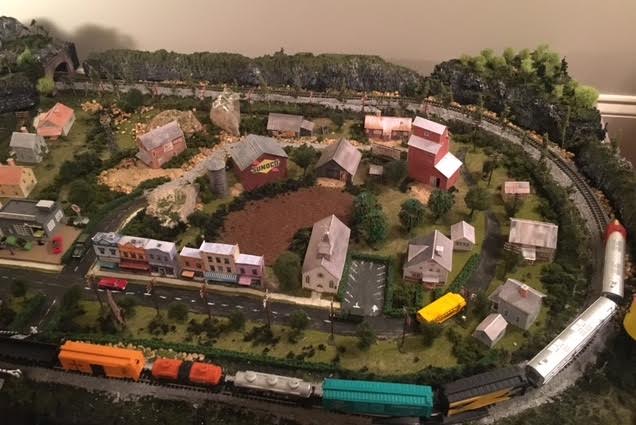
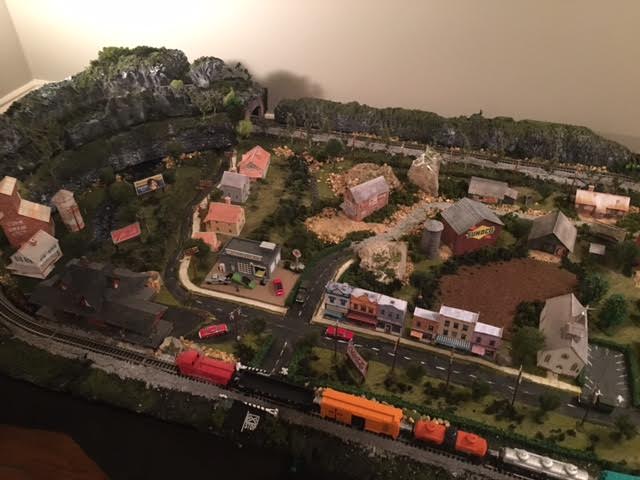

great layout, nicely done.
i had a friend once that tried to cross n scale with ho. never did find out if it worked, knowing him no. nice layout lots of swithces, nice.
Superb layout Mike , great detail and scenery . The water feature is excellent, there is a lot going on in that space . You have done a great job , very good modeling , nice layout indeed
Great work. I’m glad shimming the track helped. With my bigger O gauge locos…same issue. The menards track sits higher than the switches. While I’ve shimmed mine, the foam still allows some misalignment. I’m looking into flex track that will better work with my gargraves switches. Let us know how it works after some use.
Rob, fantastic that you got the problems sorted. I have some 45 year old Peco points/turnouts on my layout and noticed that I was having derailments at them. Then I saw that the sharp point of the frog had warn away over the years, allowing the wheels to go the wrong way. I tried 2 methods to fix this. 1. Rebuild the frog with some very strong putty. 2. Shim the guardrail opposite the frog to keep the wheels from picking the frog.
Rob
Expertly done video of point work & great tips. Much thanks.
Mike
First rate layout. In N scale yet. A little more techy info on track, points etc would be great for the fans. Big Al & excitable John have to proud of you for a fine job on the buildings.
Very nice work very imformitive. Alot of good information enjoyed video,
Mike, Very nicely done. George Zaky says “In N scale yet”, indicating that he thinks modeling in N scale is harder than in O or HO. I model in Z scale, having modeled in O and HO previously and do not find it markedly more difficult. What do you think?
Very nice tips & photos. Things we all can use on are layouts.
Al hopefully you or you readers can help me. I have a holland windmill that I would like to add LEDS to the tips of the blades as they rotate, but I have no idea on how to .do that. Can some
one help this old disabled Vet. Thank You
Hat
very nice layout. good work.
Great video and solution to the track flex problem. It never ceases to amaze me how even the smallest track irregularity can cause running issues. As I discovered to my chagrin in my last layout. This time round I laid a lot more attention to levelling track junctions and curves and it certainly pays dividends. Thanks again for a great video Rob.
Rob, so much great information and I love watching the trains run at the end of the video. You’ve done a beautiful job with everything!
Mike, great N scale layout. Lots to see and enjoy…it’s hard to believe it’s only 4×2. You made excellent use of the space so that it feels larger. Great job!
nice work
It’s the easement on the approaches to the crossover that may be the problem.
Well done Rob!
Sometimes I wonder if the permanent way engineers on the real railways could learn a thing or two from we modelers.
Just imagine how much it would save if they’d triaged things in miniature beforehand. Here in Manchester, impossibly tight curves resulted in the cross-city tram network being shut down for a month due to excessive rail wear.
To all contributors though, a thousand thankyous. I think Al should be prescribed on the NHS for services to us all.
Hi Rob, If you use the track cutters to cut from top to bottom you get much better cut on OO track. otherwise great modelling of british railways as usual.